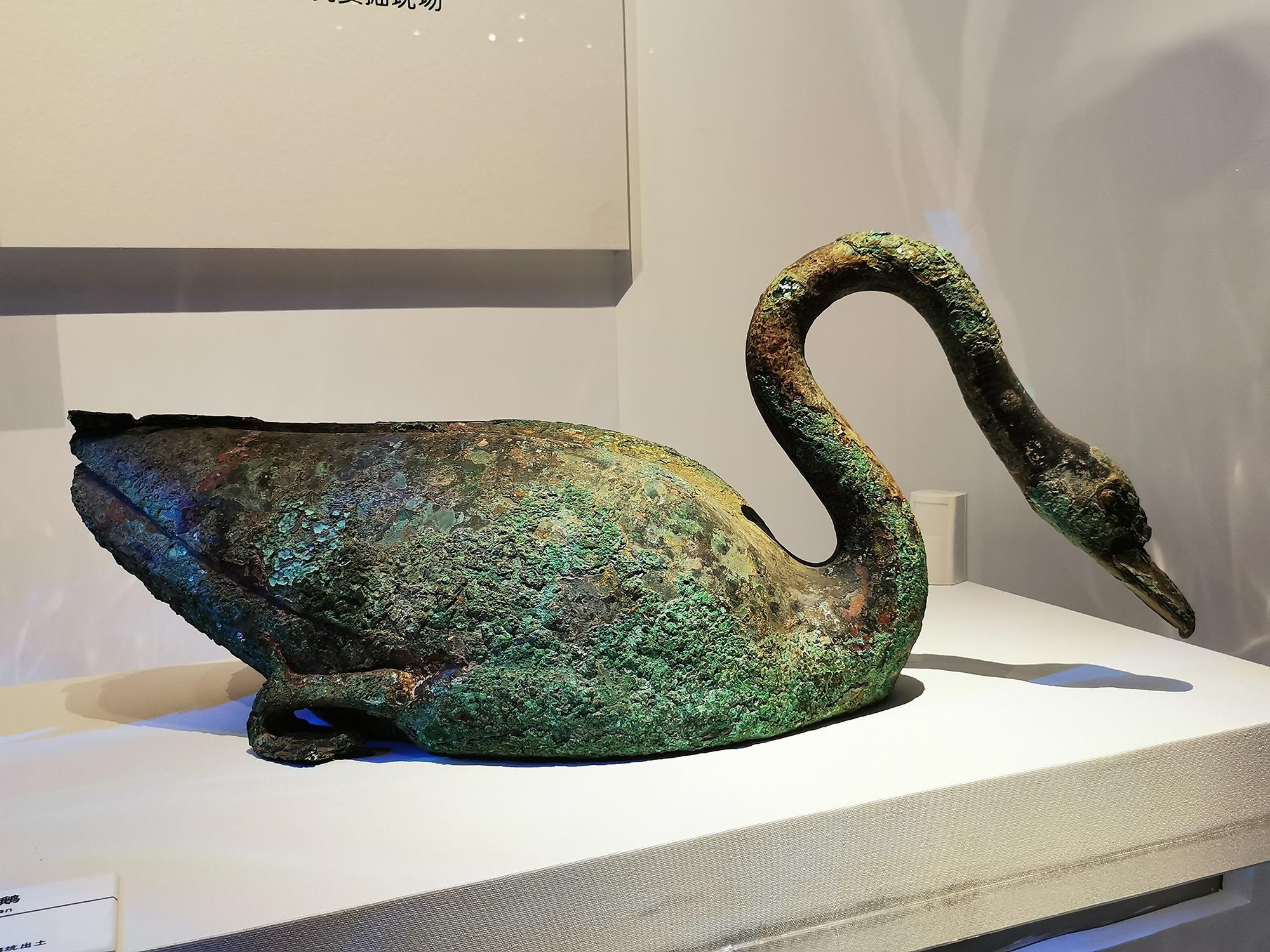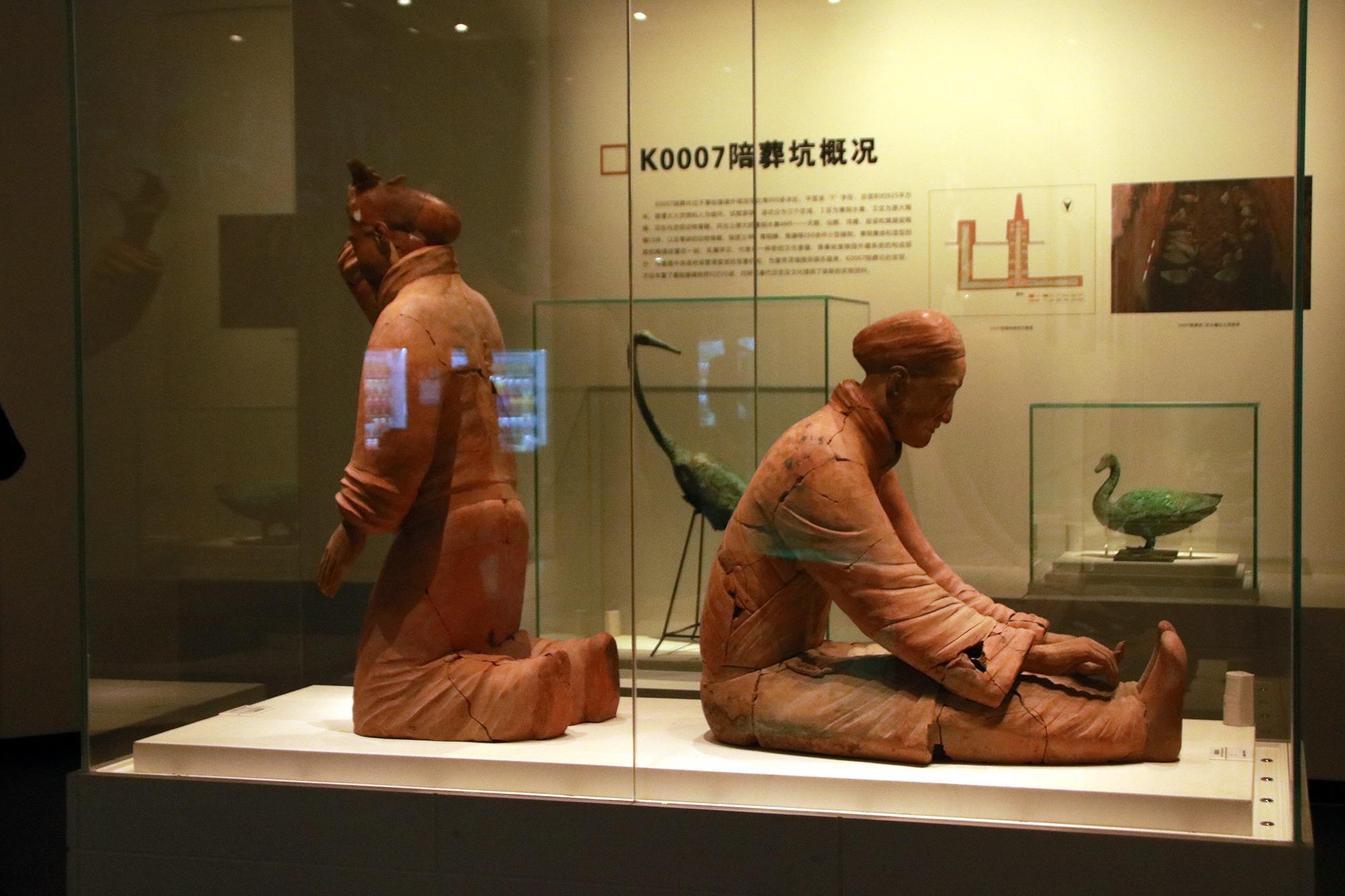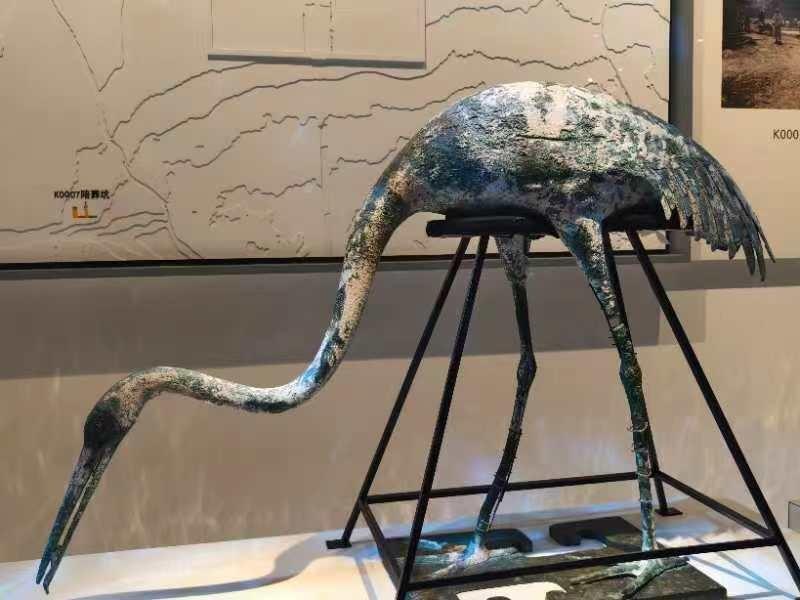 A bronze swan on display at the Qinshihuang Mausoleum Site Museum in Xi'an, Shaanxi province. (PROVIDED TO CHINA DAILY)
A bronze swan on display at the Qinshihuang Mausoleum Site Museum in Xi'an, Shaanxi province. (PROVIDED TO CHINA DAILY)
Apart from the life-size Terracotta Warriors buried in the mausoleum of Qinshihuang, the first emperor to unite China more than 2,000 years ago, bronze aquatic birds also accompanied him into the afterlife.
A show now on at the Qinshihuang Mausoleum Site Museum in Xi'an, Shaanxi province, displays 57 bronze water birds and clay figures discovered in a pit, the contents of which are said to be related to the emperor's favorite entertainments. The show is divided into three sections, which recount the discovery of the bronzes, the ancient crafts used to make them, and how they were designed and made to match their surroundings. It runs through May 5.
Everything on display was unearthed in Pit No 7, a burial pit far from the one containing the terracotta army. So far, 46 life-size water birds, including cranes, swans and wild geese, as well as 15 kneeling pottery figures, have been discovered.
READ MORE: Experts restore Terracotta Warriors in Xi'an
"It's rare to see figures and water birds together in imperial tombs. It's also very different from what has been found in other pits and chambers at Qinshihuang's mausoleum. It's an illustration of the inner world of Qin Dynasty (221-206 BC) people," says Wang Rui, curator of the exhibition.
 Kneeling pottery figures were said to be keepers of those waterfowl, who trained the birds to dance to the music. (PROVIDED TO CHINA DAILY)
Kneeling pottery figures were said to be keepers of those waterfowl, who trained the birds to dance to the music. (PROVIDED TO CHINA DAILY)
The kneeling pottery figures and life-size waterfowl were found arranged neatly alongside remnants of ancient musical instruments when they were unearthed in Pit No 7. According to Wang, this indicates that the figures were keepers, who trained the birds to dance to the music. Entertainment was one of the other themes of China's first emperor's underground world, in addition to military power.
The bronze birds, including swans, cranes and wild geese standing in lines, are unique and well-made. Even birds of the same species are slightly different from one another.
"They are vivid creations. Their layers of feathers and feet as thin as paper can clearly be seen. They look as if they are alive," says Wang.
One of the bronze cranes is holding a worm in its beak, frozen at the moment the crane plucked it from the water. A wild goose raises its long neck, sending its cries toward the sky. The figures kneel in front of the birds in poses that suggest they are playing music.
The techniques used are sophisticated. The craftsmen applied pigments made from mineral stones onto parts of the birds. Patterns on each part, such as the neck and belly, were also painted differently.
 A bronze crane at the exhibition vividly depicts it holding a worm in its beak. (PROVIDED TO CHINA DAILY)
A bronze crane at the exhibition vividly depicts it holding a worm in its beak. (PROVIDED TO CHINA DAILY)
Experts say that, based on relics discovered in the pit, there was once a music department and a garden housing waterfowl for the amusement of the imperial family at the emperor's complex.
Emperor Ying Zheng took the throne of the Qin state at the age of 13 in 246 BC during the Warring States Period (475-221 BC). He defeated a series of rival powers and united China in 221 BC, renaming himself Qinshihuang (or "the first emperor of Qin"). During his rule, the emperor standardized coins, weights and measures, and built an early version of the Great Wall.
His mausoleum is known for its thousands of life-size clay soldiers, each with unique facial expressions. Many of the pits and chambers in the tomb complex remain unexcavated but excavations around the emperor's tomb so far have unearthed lifelike figures of dancers, acrobats and musicians. The bronze water birds discovered in Pit No 7 offer another glimpse into his daily life.
ALSO READ: Unearthing a fascinating past
Wang says that the exhibition leaves many questions for archaeologists to answer, such as why only cranes, swans and geese were chosen to accompany the emperor, who made them, and how they were able to make the birds look so lifelike.
"There are still many mysteries about Qinshihuang's mausoleum for us to explore," says Wang.


